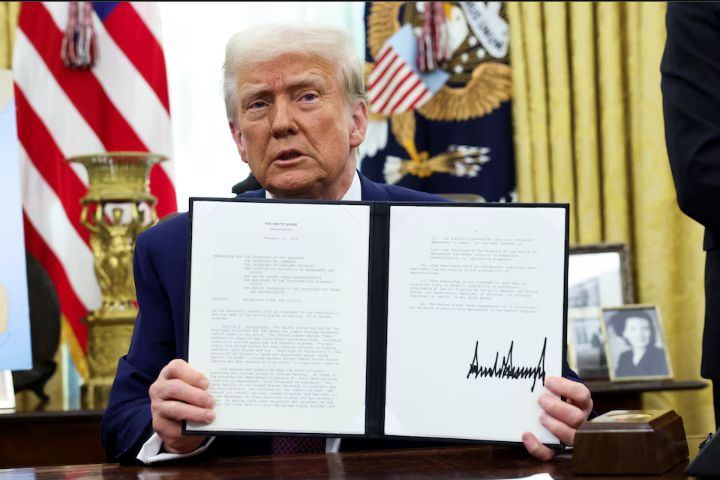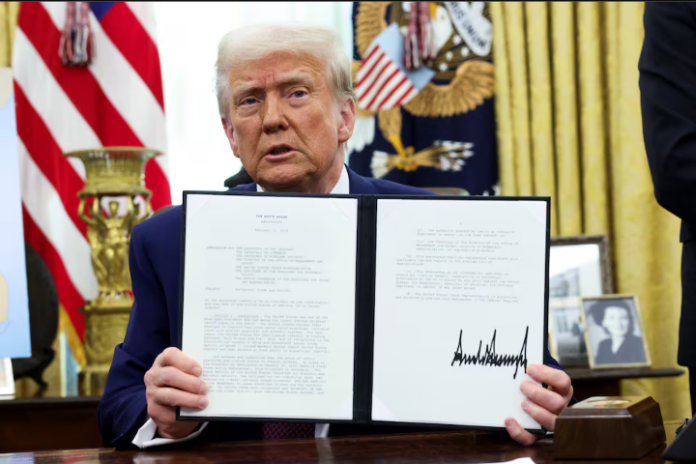U.S. President Donald Trump has unveiled a bold trade policy, instructing his economic team to draft plans for imposing reciprocal tariffs on countries that tax American imports. This move, while still in its early stages, has sent shockwaves through global markets, raising concerns about potential trade conflicts and inflationary pressures.
A New Approach to Tariffs
During an Oval Office briefing, Trump declared, “On trade, I have decided for purposes of fairness that I will charge a reciprocal tariff, meaning whatever countries charge the United States of America, we will charge them. No more, no less.”
He then signed a directive ordering his team to calculate duties that match those imposed on U.S. goods by other nations. Additionally, the administration plans to counteract non-tariff barriers, such as safety regulations that hinder U.S. auto exports and value-added taxes (VAT) that inflate costs for American businesses.
Who Will Be Affected?
The policy, if implemented, could significantly impact major U.S. trading partners, including China, Japan, South Korea, and the European Union. These nations, which maintain high tariff rates or strict trade regulations, will be closely scrutinized under the new plan.
Although the announcement has heightened fears of a global trade war, the directive does not immediately impose new tariffs. Instead, it sets the stage for an extensive review process, expected to take weeks or even months, before any concrete actions are taken.
Market Reactions and Economic Implications
Following the announcement, Wall Street responded with cautious optimism. Stocks gained as investors took comfort in the fact that no immediate tariffs were introduced. However, concerns remain that retaliatory tariffs from other nations could drive up inflation and complicate Federal Reserve rate-cut decisions.
Trump’s nominee for Commerce Secretary, Howard Lutnick, assured that the administration would handle the issue on a case-by-case basis. He noted that a full assessment of trade imbalances and tariff structures would be completed by April 1.
Will This Plan Work?

Trade experts warn that structuring reciprocal tariffs is easier said than done. Many argue that this approach could escalate tensions rather than lead to fairer trade agreements. “If you were going to implement reciprocal tariffs on the scale he’s talking about, this is exactly how you would go about it,” said Josh Lipsky, Director of the Atlantic Council’s GeoEconomics Center.
However, the Trump administration insists that the move is not purely punitive but rather a negotiating strategy. A White House official stated that the president would gladly lower tariffs if other nations agreed to reduce theirs.
Potential Negotiations with India
India, one of the highest tariff imposers on U.S. goods, was also a topic of discussion. Following a meeting with Indian Prime Minister Narendra Modi, Trump indicated that India may be open to reducing tariffs and increasing purchases of American oil, gas, and military aircraft. A trade deal between the two nations could materialize within the year, according to senior officials.
What’s Next?
While Trump’s proposal has yet to take effect, it sets the stage for major shifts in U.S. trade policy. If implemented aggressively, it could trigger retaliatory measures from affected countries, potentially sparking a full-blown trade war. However, if used strategically, it might pressure trading partners to negotiate more favorable terms for the U.S.



